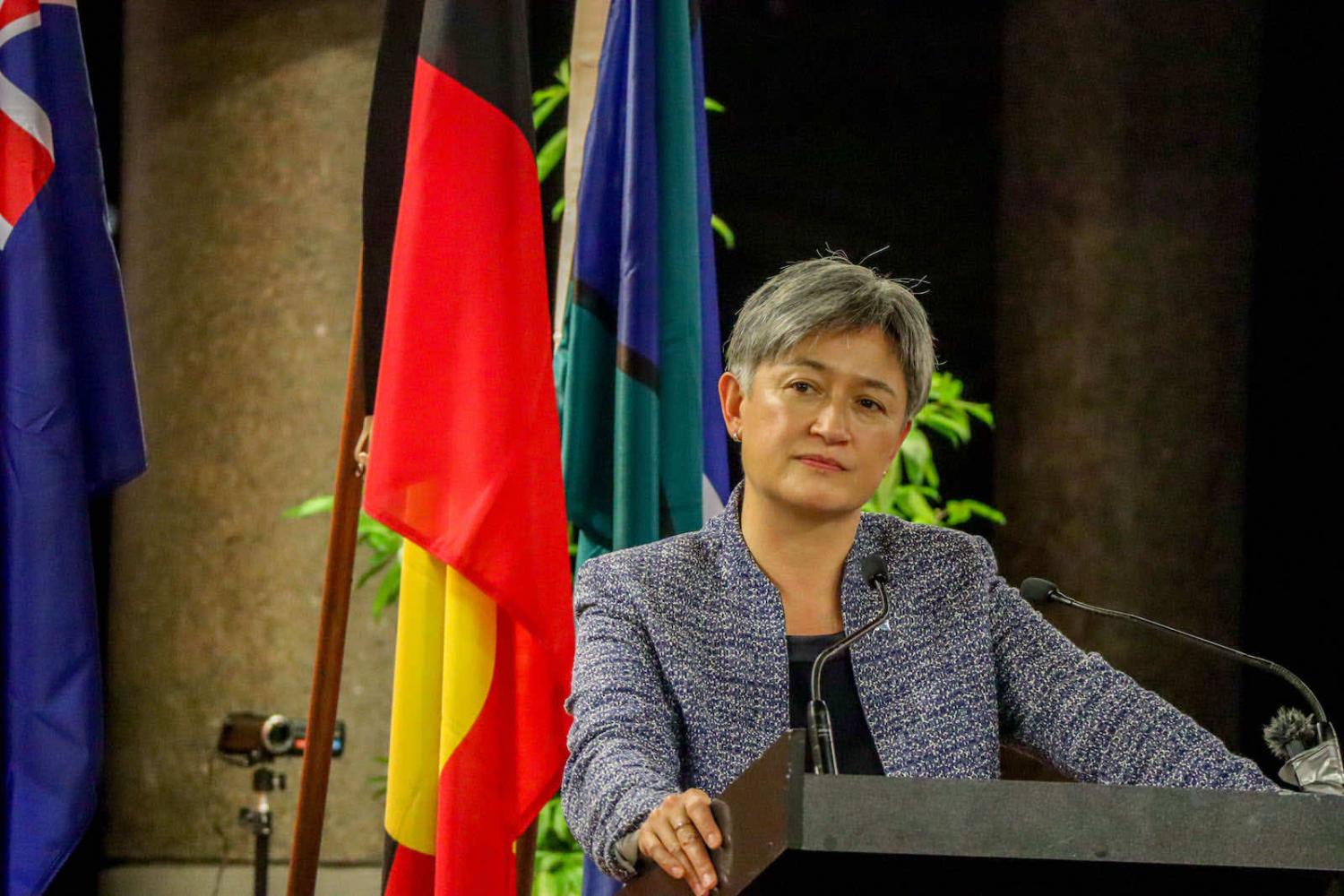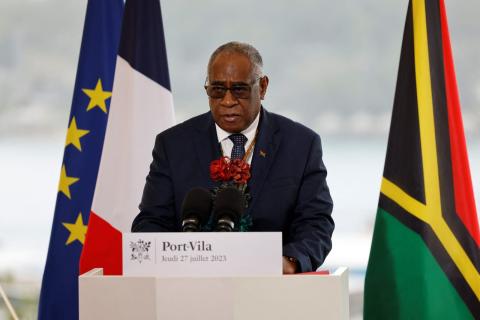Penny Wong, Australia’s new Foreign Minister, has quickly headed to the Pacific Island region inside her first week in the role. Wong’s intentions appear twofold: a counterbalance to the eight-nation tour of the Pacific by China’s Foreign Minister Wang Yi, also occurring this week, and to prove to the region – from the outset – that the relationships with Pacific Island leaders are a priority for the Labor government. As she put it in a speech on Thursday in Suva, “we will work with you to make our Pacific Family even stronger”.
In the election campaign Labor released its “Plan for a Stronger Pacific Family”, which drew a positive response. It takes the previous government’s Pacific Step-up – a foreign policy priority aiming to strengthen ties with the Pacific – and steps it up further. It also appears to respond to a decade of calls from Pacific policy experts for a fresh approach, such as by introducing family-related migration pathways to Australia from the Pacific.
Labor’s “Pacific Plan” ticks a lot of boxes. But there’s also some left unchecked. And one of those is critical to the security of the region – economic growth.
Economic growth is regarded in the Pacific Plan as one of many outcomes of the government’s proposed aid projects (which are yet to be defined). It’s not a central policy target that will help build a “Stronger Pacific Family”. Nor is there explicit language identifying economic growth as a key strategy to building regional strength. Rather, it’s implicit in the policies on labour mobility. This is a problem. Economic growth should be an unambiguous element of Australia’s Pacific strategy, not least because economic strength acts as a bulwark against China’s easiest road into the Pacific – competitive lending.
Research shows there would be more benefits to the Pacific region than that provided by Australia’s annual aid contribution, if just 1 per cent of the Pacific’s population worked permanently in Australia.
Research estimates that due to the pandemic, Pacific Island nations stand to lose a decade of development. On top of that, growing youth populations are putting pressure on job markets across the Pacific, where opportunities for economic diversification are limited. Remittances – money sent home – are increasingly becoming a dominant and critical feature of national incomes for Pacific Island nations.
Close to two-fifths of Tonga’s Gross Domestic Product (GDP), and one-sixth of Samoa’s GDP, is fuelled by remittances. In both countries, around four-out-of-five of households receive remittances. This dependence is not unique to Tonga and Samoa; right across the Pacific, remittances are helping households survive closed borders and disasters that continue to devastate scores of communities.
Australia’s labour mobility schemes and permanent migration to the country have the potential to make the greatest contributions to the Pacific’s economic development, because living and working in Australia gives opportunities to send money home. Research shows there would be more benefits to the Pacific region than that provided by Australia’s annual aid contribution, if just 1 per cent of the Pacific’s population worked permanently in Australia.
There is no doubt that remittances can provide immense economic benefits to the region. But the cost of remittances in the Australia-Pacific corridor is persistently high, even after years of policies designed by the Australian government and Pacific central banks which have tried to reduce them. Tens of millions in US dollars per Pacific nation, per year, is taken through fees. That’s millions which could be injected into struggling economies annually, and straight into households, if remittance costs were reduced.

Tackling remittance costs is challenging, but there are some options at hand.
The first is increasing competition by dismantling exclusive contracts that prevent most transfer operators from accessing the most popular method of remitting: depositing cash at Australian post offices. Exclusive contracts limit competition, leaving fees persistently high (in some cases in the Australia-Pacific corridor of up to 17 per cent of the nominated amount). Higher fees allow the dominant company to run a large network of agents in relatively low overall cash value remittance corridors, but competition will reassure the market that its price is not inflated.
High remittance prices are complicated by a lack of market transparency. Transfer operators can profit on hidden fees or exchange rate hikes without the sender knowing. Low digital literacy among Australia’s Pacific Islander diaspora compounds the problem, although SendMoneyPacific, a price comparison website, is a great government initiative seeking to address the challenge.
The Australian Competition and Consumer Commission (ACCC) can enforce that transfer providers indicate the up-front fee and exchange rate markups. It can also target “debanking”, a non-competitive practice aimed at keeping private companies from using the banking system due to their faster transfers and low-cost, transparent fees.
Banks aren’t always the bad guys though. The Tongan Development Bank has a pilot program, ’Ave Pa’anga Pau, providing low-cost transfers from Australia to Tonga at around 4.5 per cent. Users must buy digital vouchers instead of depositing cash (the preferred method). For people living in any of Tonga’s 36 inhabited islands, emergency access to digital finance may prove difficult, but it could be replicated in other Pacific countries if results are positive.
Currently, Pacific central banks are building a regional Know Your Customer (KYC) facility for due diligence and anti-money laundering processes. This will help streamline identification processes for people with limited access to personal identity documents.
But there is more that central banks can do, such as administering the Australia-Pacific remittance corridor as part of their daily foreign exchange transfers, and absorbing administration costs into the foreign aid budget.
Addressing the cost of remittances is challenging. But the benefits far outweigh the effort required to think creatively and be bold in financial reform. And given all the rhetoric on strengthening the Pacific – from both sides of government – reducing the cost of remittances for the tens of thousands of Pacific Islanders who will migrate to Australia under its Pacific new visa categories could be the government’s policy centrepiece.


